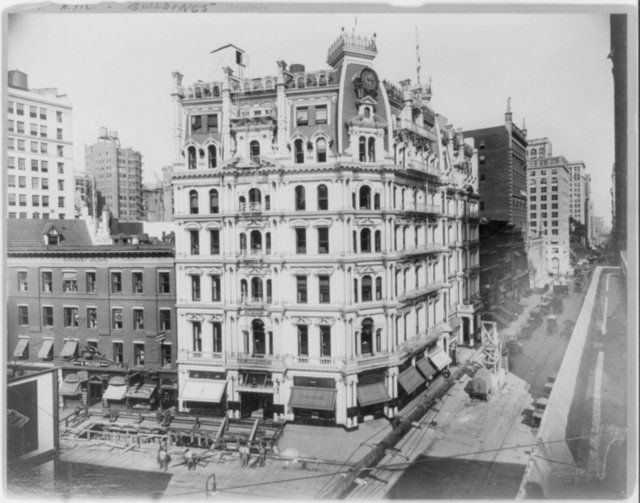Black Friday Sale 🎊
Explore overlooked city sights on one of our expert-led NYC walking tours!


Gilsey House. Photo from Library of Congress.
On Sunday, October 19th at 4pm we’ll be hosting a walking tour with historian and author David Freeland through the remnants of the area of Manhattan once known as The Tenderloin. This area, which turned into the northern part of Chelsea, was home to New York City’s red light district, its dance clubs and gambling houses. Following the tour, we’ll be hosting an optional cocktail at the hidden speakeasy Bathtub Gin. In preparation for the event, we’ve interviewed David about what we’ll see on the tour and what some of his favorite Untapped finds are in the city.
Tell us about what the Tenderloin was like in its hey day and why it’s such an important part of NYC’s history
The Tenderloin peaked from the 1870s to the years just before 1910. By 1910, it was essentially over. The Tenderloin really could not have existed at any other time, and in few other places, within New York history. Why? It developed specifically as a shadowy outgrowth of the luxury hotel industry, which blossomed along Broadway and the upper 20s during the last decades of the 19th century–beginning with the opening of Gilsey House (where we will start our tour) in 1871. Money flowed into the area, thanks to the influx of wealthy businessmen from the provinces–who came to New York with money to spend, and who were always looking for “after-hours” recreational opportunities!
For this reason, the Tenderloin was famed as a place of expensive vice, although it grew more plebian in nature as one moved westward, toward Seventh and Eighth Avenues. Because there was so much money to be made in the Tenderloin’s gambling houses, brothels, dance halls, and concert saloons, everything was able to operate and thrive with the help of police protection. The system of payoff was entrenched very deeply, and it was not until larger, corporate forces got involved in a vice clean-up effort that the Tenderloin really fell. I like to compare it, sometimes, to Storyville in New Orleans, in that the Tenderloin was the closest New York has ever come to having an officially sanctioned red-light district.
What remnants might we see on the tour?
We are going to visit, among other sites, the remnants of Tin Pan Alley, where the American popular music business was really created as an industry. Tin Pan Alley was the tiny sliver of a block of 28th Street between Broadway and Sixth Avenue; between 1893 and 1908 scores of music publishers and songwriters were located there, in former rowhouses that can still be seen–although they are at serious risk today of demolition. During the tour, we will discuss why Tin Pan Alley was not just “in” the Tenderloin, but, through its connections to the vice industry, “of” it.
What’s your favorite “untapped” find in New York? From your book?
My favorite find, uncovered in the book, was the remnant of the original Atlantic Garden on the lower Bowery. The Atlantic Garden was one of the greatest institutions in 19th century American recreation–nominally a beer garden, but in reality so much more–because of its embrace of so many different types of entertainment styles and movements. The Atlantic Garden brought some of the first all-female orchestras to the United States, while popularizing beer as a recreational beverage. Moreover, it pioneered the “all in one” concept of many different attractions – bowling, billiards, music, food, even an aquarium – under a single roof, in a family-friendly environment conceptually not unlike today’s amusement parks.
Finally, by the 1880s and 90s, the Atlantic Garden was a leader in vaudeville, booking racially integrated bills of entertainers and even hosting (reputedly) the premiere of the popular song “A Bicycle Built for Two,” which helped launch a craze for bicycling in the 1890s. All in all, the Garden managed to hold its prominence for over 50 years. I discovered during research that the massive original outer shell, dating from around 1866, had never been demolished, and remained hidden on the Bowery under a more recent façade. Unfortunately, this was demolished last year for a hotel; the demolition received a fair bit of press attention because, prior to the opening of the Garden, the structure had been the Bull’s Head Tavern, George Washington’s stopping place on Evacuation Day, 1783, when the British left Manhattan, and a legendary gathering place in colonial-era New York.
What are you working on now?
Mostly articles and book reviews for publications like the Wall Street Journal, along with a new project that I haven’t announced yet. But it will be a very different (for me) way of looking at the kinds of New York-related themes I’ve explored in the past.
Check out more Untapped Cities events this fall
Subscribe to our newsletter